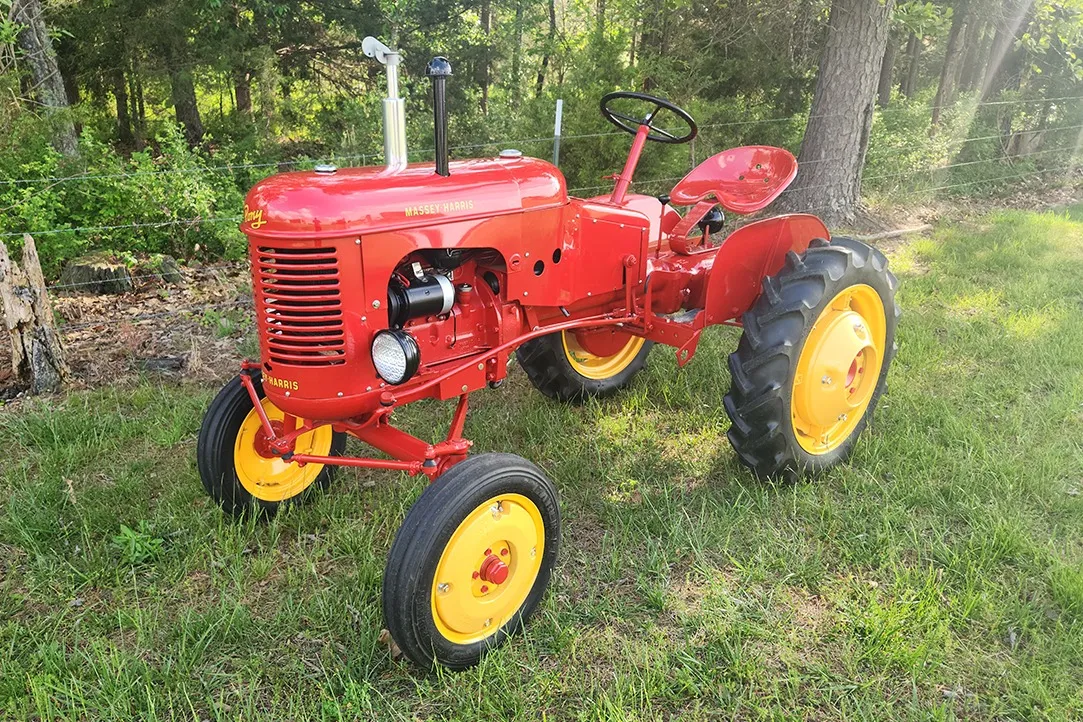YETRAC
Massey-Harris: A Tale of Agricultural Excellence
Massey-Harris: A Tale of Agricultural Excellence
In the vast and ever-evolving landscape of agricultural machinery, few names command as much respect and recognition as Massey-Harris. With a storied history dating back to the 19th century, this iconic brand has played an instrumental role in shaping the world of farming. In this comprehensive exploration, we delve into the rich heritage, groundbreaking innovations, and enduring impact of Massey-Harris.
The Genesis of Massey-Harris
The Massey-Harris Company was founded in Newcastle, Ontario, Canada, in 1847 by Daniel Massey. It initially started as a humble blacksmith shop but quickly expanded its horizons to include the production of farm implements. Daniel Massey’s commitment to craftsmanship and innovation laid the foundation for what would become an agricultural powerhouse.
In 1891, a pivotal merger took place between the Massey Manufacturing Company and A. Harris, Son & Co. Ltd. This union gave birth to the Massey-Harris Company, setting the stage for a new era of agricultural machinery manufacturing.
Innovations that Redefined Farming
Massey-Harris wasted no time in making its mark on the agricultural industry. It introduced a series of innovations that transformed farming practices, making them more efficient and productive. Here are some notable milestones:
1. Self-Raking Reaper
In the late 19th century, Massey-Harris revolutionized harvesting with the introduction of the self-raking reaper. This innovation significantly reduced the labor required for harvesting crops like wheat and oats, setting the stage for larger-scale farming.
2. The First Successful Combine Harvester
One of Massey-Harris’s most iconic achievements was the production of the world’s first commercially successful self-propelled combine harvester in 1938. This groundbreaking machine combined the processes of cutting, threshing, and cleaning grain in one pass, dramatically increasing harvesting efficiency.
3. Tractors for the Modern Age
Massey-Harris recognized the importance of tractors in modern agriculture and began manufacturing them in the early 20th century. Their tractors were renowned for their reliability and performance, becoming indispensable tools for farmers worldwide.
4. The Post-War Expansion
After World War II, Massey-Harris experienced a period of significant expansion and growth. The company diversified its product line to include a wide range of agricultural machinery, including plows, cultivators, and balers.
The Merger that Shaped a Giant
In 1953, Massey-Harris merged with the Ferguson Company to create Massey-Harris-Ferguson, a move that would have a profound impact on the global agricultural machinery market. The merger brought together the engineering prowess of Harry Ferguson, known for his three-point hitch system, and Massey-Harris’s manufacturing expertise.
The result was a range of tractors, known as Massey-Harris-Ferguson or MF tractors, which incorporated Ferguson’s innovative hitch system. These tractors quickly gained popularity for their ease of use and versatility, becoming a staple on farms around the world.
The Massey Ferguson Legacy
The merger with Ferguson marked the beginning of a new era, and in 1958, the company officially became Massey Ferguson. Under this banner, the brand continued to develop cutting-edge agricultural machinery, including iconic tractor models like the MF 135 and MF 165.
Massey Ferguson’s commitment to innovation extended to the global stage, where its machinery played a vital role in the Green Revolution, helping increase food production and alleviate hunger in developing nations.
The Modern Massey Ferguson
Today, Massey Ferguson is a global agricultural machinery giant, with a presence in over 140 countries. The brand is synonymous with reliability, durability, and innovation, offering a comprehensive range of tractors, combines, balers, and other farm equipment.
Massey Ferguson’s commitment to sustainability is evident in its modern offerings, with a focus on eco-friendly farming practices and precision agriculture technologies. These innovations help farmers optimize their operations, conserve resources, and reduce their environmental footprint.
Conclusion: A Timeless Legacy
The story of Massey-Harris, which evolved into Massey Ferguson, is a testament to the enduring spirit of innovation and excellence in agriculture. From its humble beginnings in a Canadian blacksmith shop to its global prominence today, the brand has continually pushed the boundaries of what is possible in farming.
Massey Ferguson’s legacy is not just one of machinery but of the countless farmers who have relied on its equipment to feed the world. As we look to the future of agriculture, Massey Ferguson remains at the forefront, driving progress and sustainability in the industry, just as it has done for more than a century.
In the ever-evolving world of farming, Massey Ferguson stands as a symbol of unwavering commitment to the land, the harvest, and the future of agriculture.
For farmers, innovators, and enthusiasts alike, Massey Ferguson’s story is one of inspiration and a reminder that with determination and ingenuity, we can cultivate a brighter future for agriculture.

